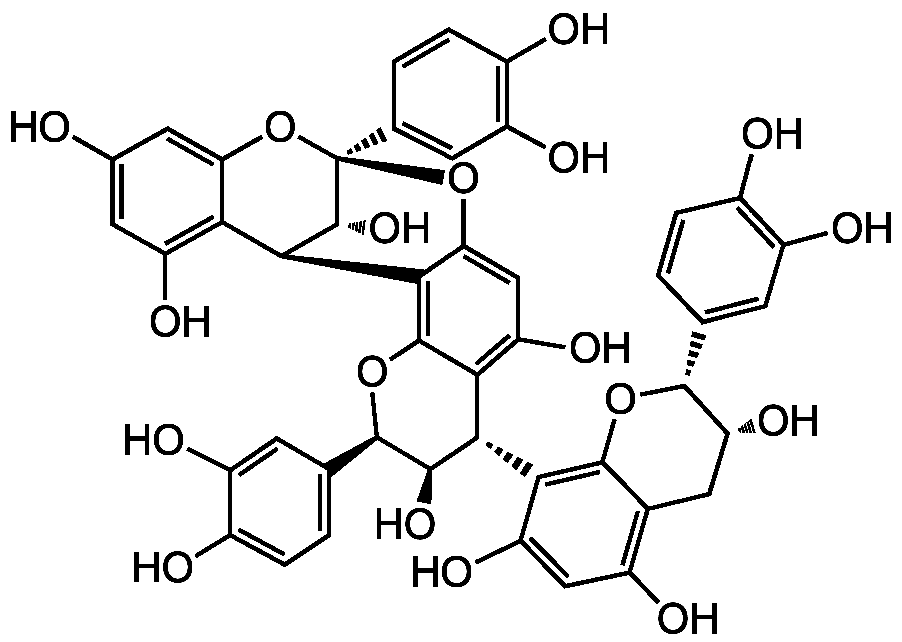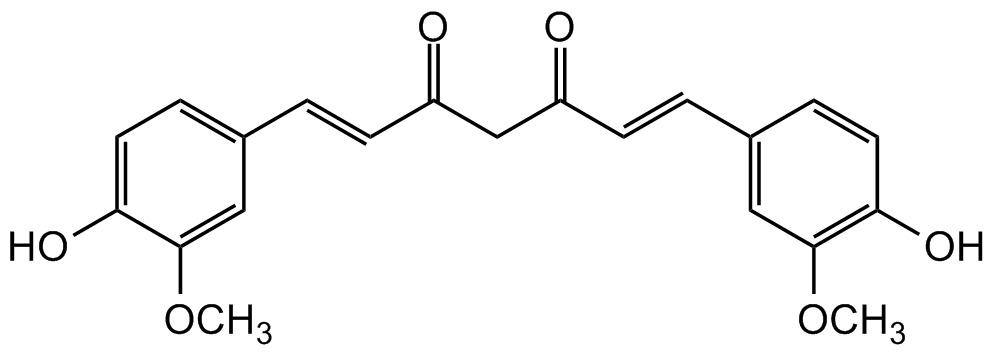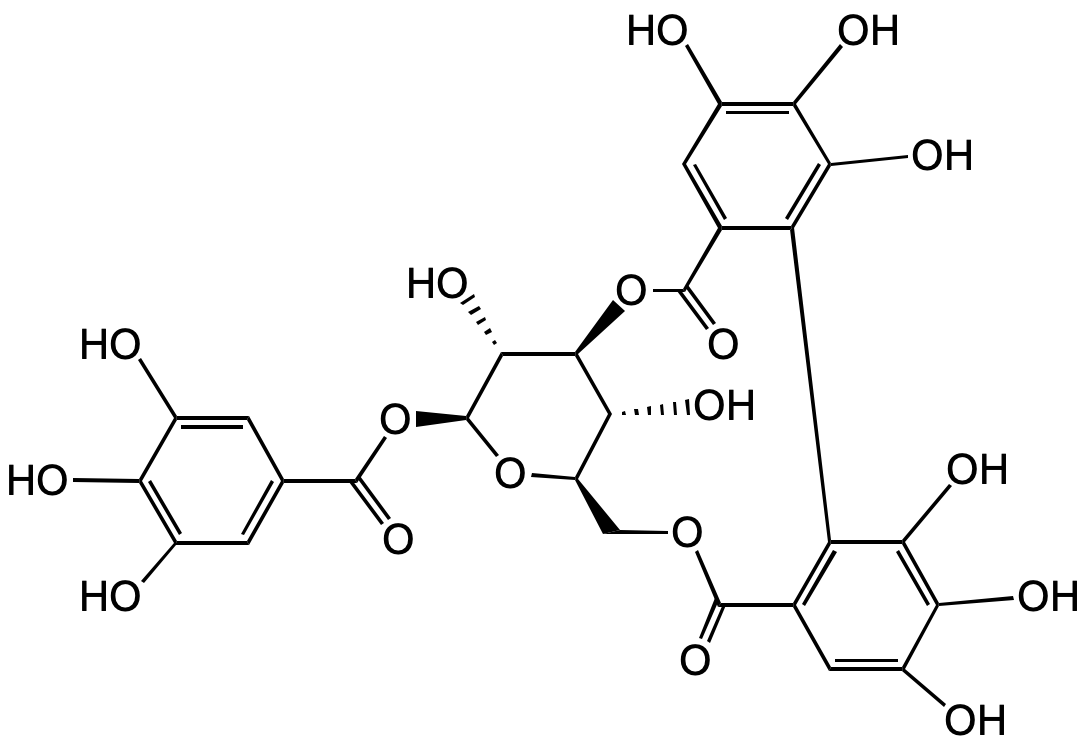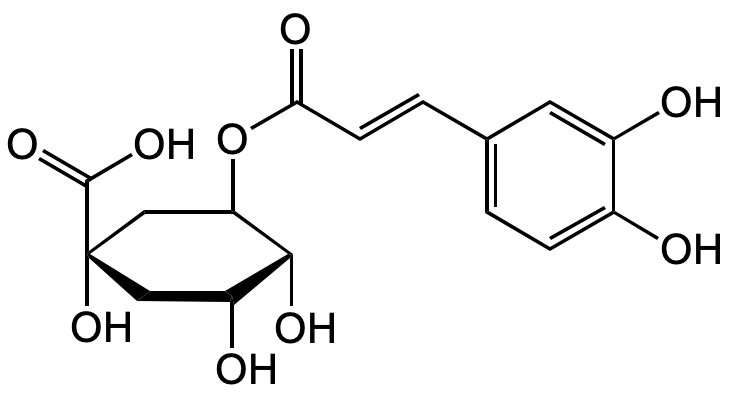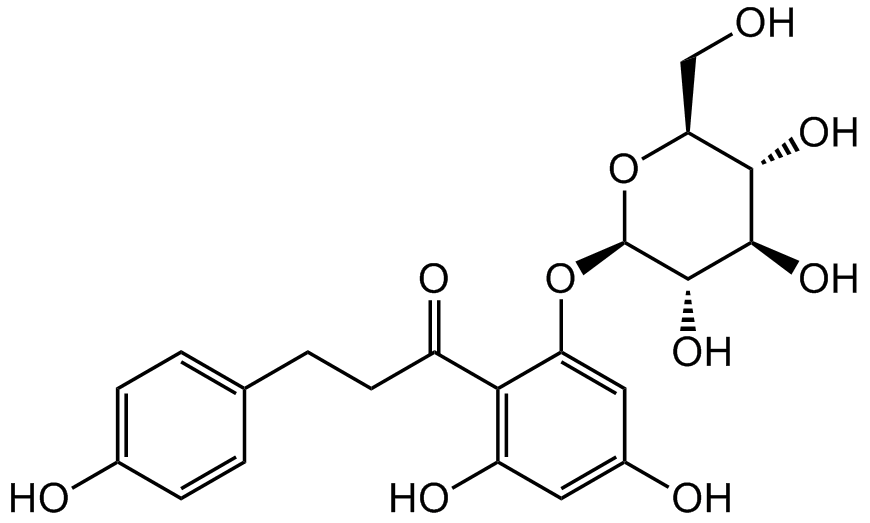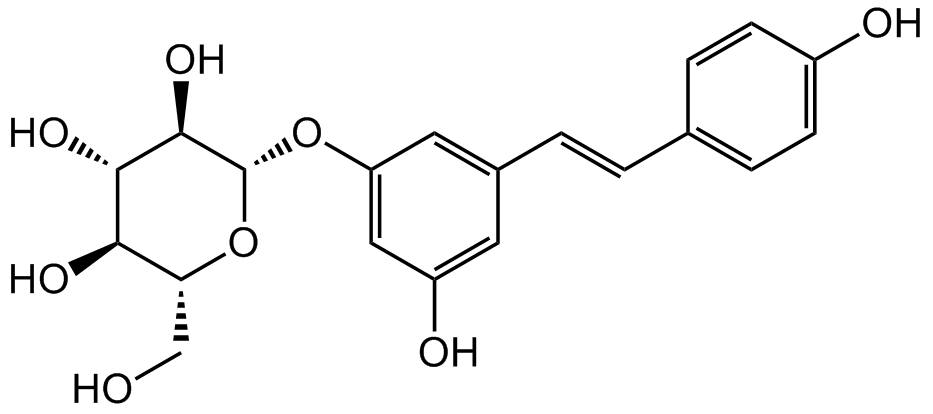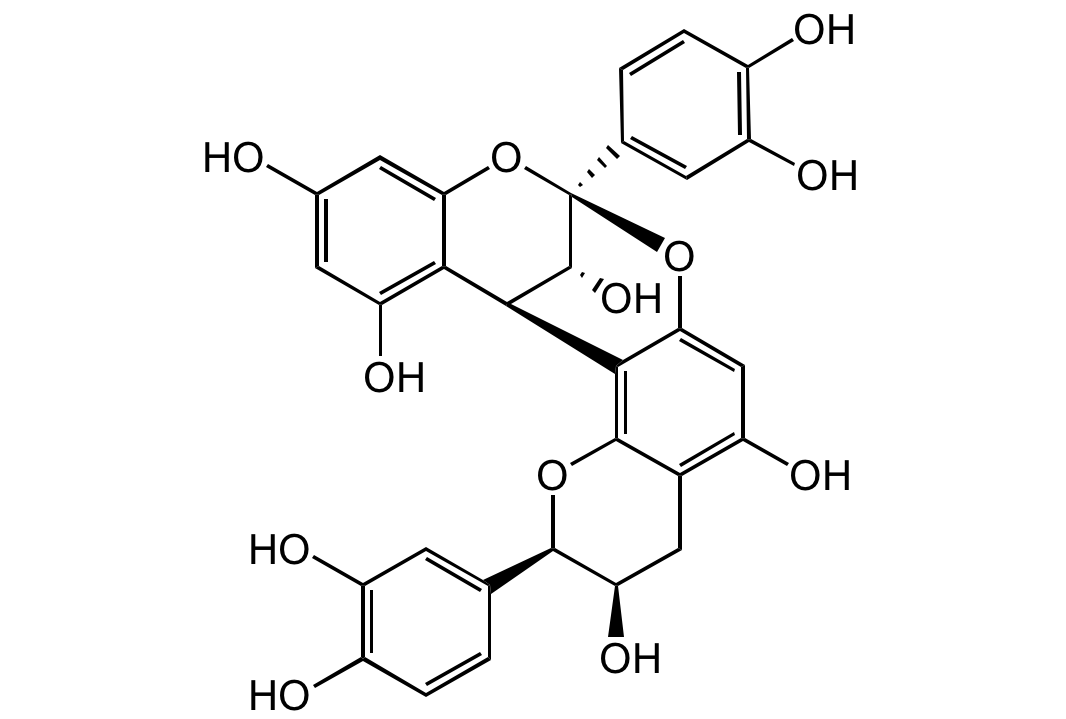
Chemical Structure
Procyanidin A2
AG-CN2-0486
CAS Number41743-41-3
Product group Chemicals
Estimated Purity>95%
Molecular Weight576.5
Overview
- SupplierAdipoGen Life Sciences
- Product NameProcyanidin A2
- Delivery Days Customer10
- CAS Number41743-41-3
- CertificationResearch Use Only
- Estimated Purity>95%
- Molecular FormulaC30H24O12
- Molecular Weight576.5
- Scientific DescriptionA-Type proanthocyanidine. Potent antioxidant. Free radical scavenger and lipid peroxidation inhibitor. Potent low-density lipoprotein (LDL) oxidation inhibitor. Antidiabetic. Prevents islet cell apoptosis, hyperglycemia and type 2 diabetes through its antioxidant properties. Antibacterial agent. Antiviral. Shown to inhibit viral replication of canine distemper virus (CDV). Glycosyltransferase B (GTFB) inhibitor. - Chemical. CAS: 41743-41-3. Formula: C30H24O12. MW: 576.5. Isolated from grape seeds (Vitis vinifera L). A-Type proanthocyanidine. Potent antioxidant. Free radical scavenger and lipid peroxidation inhibitor. Potent low-density lipoprotein (LDL) oxidation inhibitor. Antidiabetic. Prevents islet cell apoptosis, hyperglycemia and type 2 diabetes through its antioxidant properties. Antibacterial agent. Antiviral. Shown to inhibit viral replication of canine distemper virus (CDV). Glycosyltransferase B (GTFB) inhibitor.
- SMILESOC1=CC(O)=C([C@H](C2=C(O[C@H](C3=CC(O)=C(O)C=C3)[C@H](O)C4)C4=C(O)C=C2O5)[C@@H](O)[C@@]5(C6=CC(O)=C(O)C=C6)O7)C7=C1
- Storage Instruction-20°C,2°C to 8°C
- UNSPSC12352200


